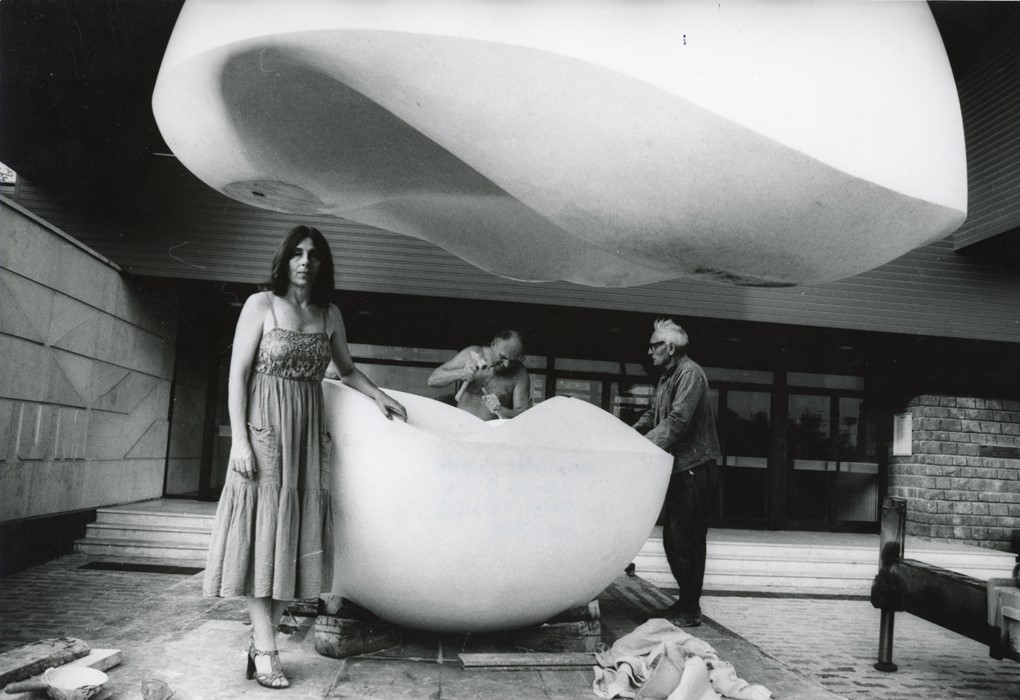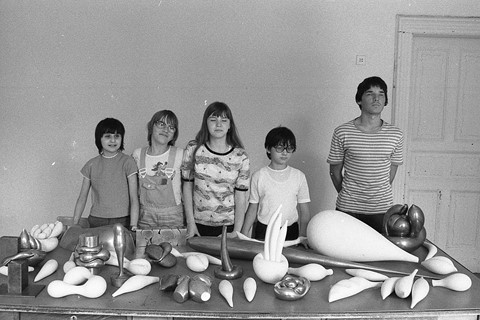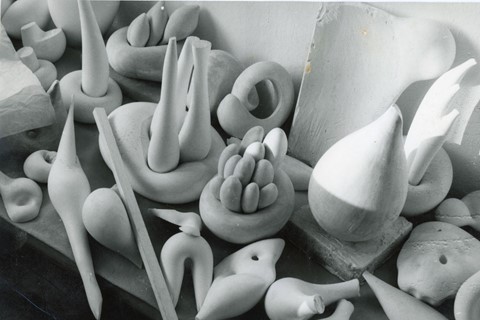As a new exhibition dedicated to Maria Bartuszová opens at Tate Modern, here’s a five-point guide to the late artist’s life and work – from her sense of spirituality to her wholehearted love of nature
The late Slovak artist Maria Bartuszová might be one of the greatest sculptors you’ve never heard of, but with the UK’s first major exhibition of her work opening later this month at Tate Modern, now is the perfect time to fall in love with her impressive legacy of around 500 sculptural pieces.
Born in the former Czechoslovakia in 1936, Bartuszová became an innovator in the medium of sculpture in the 1960s. Her ingenuity could be attributed, in part, to the mandatory isolation of living life under communist rule, but was also a result of her undeniable creativity and sharply focused vision. Narrating the full breadth of her largely unpublicised three-decade career, Tate Modern’s new exhibition guides the audience through a moving body of tactile, sensual, and evocative sculptures, with organic and biomorphic shapes that reflect the interests of their maker, and the shapes and movements that defined her world. The show will feature 50 of Bartuszová's delicate plaster works, alongside bronze casts and aluminium reliefs, many of which have never been shown in the UK before.
1. Her works weren’t shared with international audiences until 11 years after her death
Bartuszová died on December 22, 1996, but her work wasn’t presented to international audiences until more than a decade later, in 2007. While she was born in Prague, Czech Republic in 1936, the widely unsung artist spent the largest part of her career in Košice – the second largest city in what was then Czechoslovakia – close to the border with Hungary and Ukraine. Her location, and the political and economic climate of the Cold War, meant being closed off from European and global events during this time. Subsequently, she developed her practice in relative seclusion, with only a very restricted number of opportunities to exhibit during her lifetime. Despite the challenges a life under totalitarian rule created for her and her peers, particularly other women artists, Bartuszová created an undeniably impressive legacy of around 500 sculptures that speak of her persistence during the oppression of the communist era.
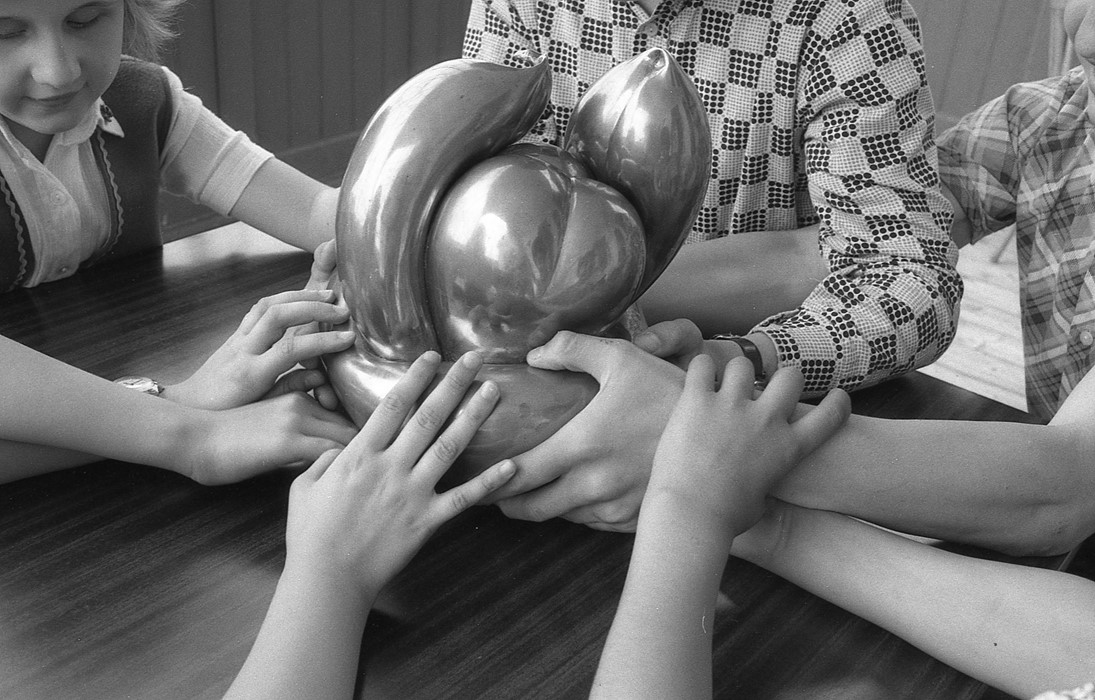
2. She created her own unique plaster casting methods
Working in relative solitude from the rest of the art world afforded Bartuszová a certain freedom from producing art in traditionally accepted ways. Inspired by playing with an inflatable balloon with her daughter, the artist began experimenting with casting with balloons, a process she called “gravistimulation”. She poured liquid plaster inside a small balloon and shaped it, meaning she was able to model abstract forms using a combination of gravity, air pressure and touch, often placing the forms in water. She could repeat this process quickly, producing a number of both solid and delicate artworks. Later, in the 1980s, she used the outside of inflated balloons as a surface to pour plaster over, before allowing the material to solidify and the balloon to eventually burst. She called this process “pneumatic casting” and described it as “a tiny void full of a tiny infinite universe”.
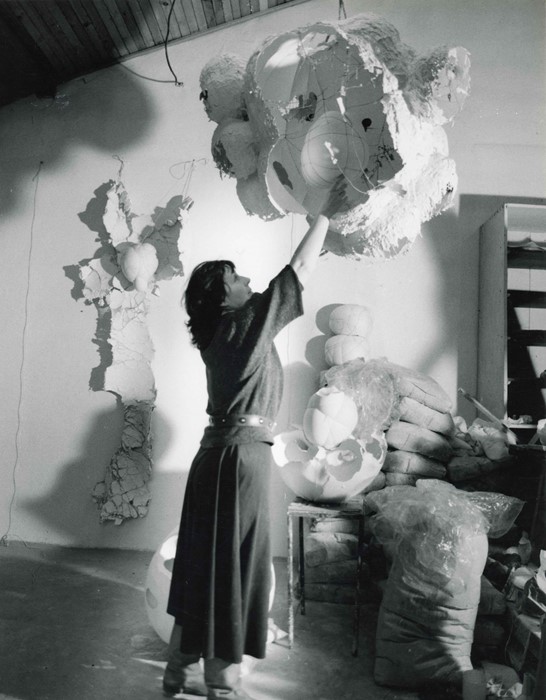
3. Her work was made for both adults and children, and was often inspired by a sense of spirituality
Heavily influenced by her own focus on intuition, play, therapy and meditation, Bartuszová produced “folded” sculptures of multiple parts, to be assembled like a puzzle, as well as large plaster shapes resembling wheat grains and raindrops. These objects could be taken apart and reassembled to spark creative thinking and were presented to blind and partially sighted children in groundbreaking workshops that encouraged them to explore these objects and shapes using movement and touch.
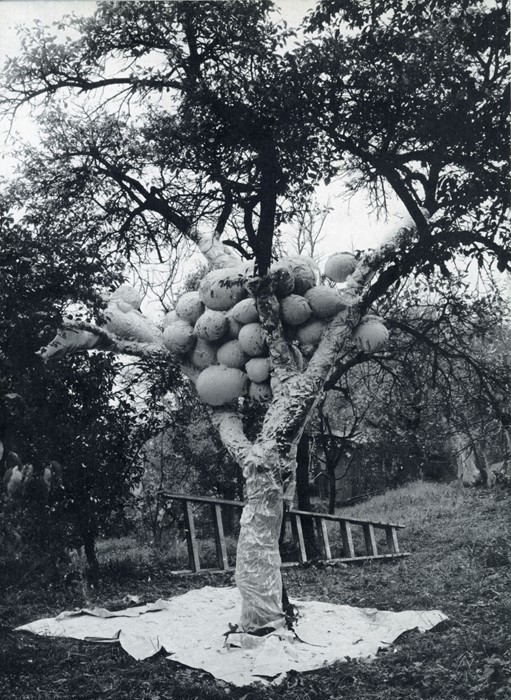
4. Nature was a major influence in the creation of her artworks
You might notice that Bartuszová’s early works resemble living things, from germinating seeds to drops of early morning dew. When it came to her work, the artist was heavily inspired by the forms and cycles of the natural world. By the early 1960s, her more abstract sculptural works were inspired by shapes from all corners of our existence, spanning everything from the human body, to the weather, reproductive systems, and even death and decay. As she neared the end of her career, Bartuszová was known to position and photograph artworks in the trees in her garden. Speaking on the matter, she said, “I would also like to realise more things directly outside – to connect – to merge my work in the work of nature organically.”

5. She worked in a range of materials and on projects of all sizes
Bartuszová was willing to take on challenges of all sizes. Her sprawling portfolio of artworks includes projects of all scales, from swollen plaster forms that could sit in the palm of a hand, to large public works, including a children’s climbing frame and slide, and a stone and bronze sculpture for the courtyard of Košice Technical University’s hall of residence. She also created work compressed by stones, as well as wood, and hollowed shapes. Juxtaposing the delicacy of her plaster work from the 1960s – a period where her sculptures were designed to be taken apart and reassembled – her work in the 1980s resembled abandoned cocoons and empty shells.
Maria Bartuszová is on show at Tate Modern until April 16, 2023.
